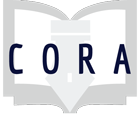Assignment
Visualizing Research
An icebreaker activity for students at any level, “Visualizing Research” employs tactile or kinesthetic learning techniques to illustrate research as inquiry. This group activity can be used in a variety of disciplines and contexts. By having students create and share visual models of their ideas or experiences with research, the lesson plan increases classroom engagement and supports an understanding of the iterative process of research.
After this activity, students will be able to:
-
Build a visual model of research
-
Describe the research process in their own words
-
Relate their past experiences to an upcoming research project
Information Literacy concepts:
Individual or Group:
This activity is part of a larger class session focused on preparing students for their upcoming research projects. At this point in the semester students should have been introduced to a research project, but have not begun researching (or might not have chosen a topic). Students break up into groups of 3-4 students, depending on material availability. Each group receives a handful of construction materials (colored paper, play doh, magnetic tiles) to build a visual representation of research. Visual models should take 10-15 minutes to complete. At the end of the activity, the instructor brings the class together to discuss various visual models and how the models emulate the research process. (We first heard about the idea of creatively representing the research project from Marcela Y. Isuster from McGill University at LOEX 2019, this is inspired by their idea.)
Hodge-Zickerman, A. Stade, E. York, C. S. and Rech, J. "TACTivities: Fostering Creativity through Tactile Learning Activities," Journal of Humanistic Mathematics, Volume 10 Issue 2 (July 2020), pages 377-390. DOI: 10.5642/jhummath.202002.17 . Available at: https://scholarship.claremont.edu/jhm/vol10/iss2/17
Isuster, Marcela Y. “Master Manipulators: Using Manipulatives for Tactile and Kinesthetic Learning in the Information Literacy Classroom.” Workshop. LOEX 2019. http://www.loexconference.org/2019/sessions.html
Kuczala, Mike. Training in Motion : How to Use Movement to Create Engaging and Effective Learning. American Management Association, 2015.
Tips:
Abstract materials (e.g. magnetic tiles, cut paper shapes) are more likely to contribute to abstract representations and descriptions of research. If the craft materials allow students more flexibility in creation (e.g. Play-doh, drawings), students might create more literal representations. Post-it Notes can provide a way for students to add labels to their research models.
We’ve found success in taking pictures of students’ creations to share with the class, in future sessions, or with teaching colleagues.

